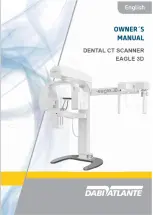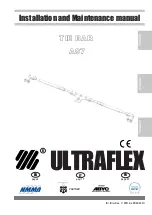F-2
Z MED Medical Air System
4107 9022 67.00
Appendix F - CO Transmitter
F.7 Maintenance
F.8 Sensor Checkout and
Replacement
To check a sensor’s response, test gas has to be
placed on the sensor. When it fails to show a
gas response during calibration, a new sensor is
required. Most sensors will last from one and
one-half years to two and one-half years.
To replace the sensor (see FIG F.9.1), discon-
nect the power to the unit, disconnect the inlet
air connection and unscrew the cover to access
the inside of the transmitter. Next, unplug the
CO sensor from the bottom of the internal PC
board. Then remove the cap on the bottom of
the transmitter and remove the CO sensor and
wiring. Unplug the wiring from the sensor and
replace it with a new one. Reinstall the sensor in
the reverse order. Once the sensor is installed
go through steps F.9.1 and F.9.2 to calibrate and
verify the proper operation of the CO sensor.
Replace damaged parts with components from
BeaconMedæs
. Test the unit after installation of
replacement parts to make certain that it com-
plies with the published specifications. Contact
BeaconMedæs
Technical Services department
at 1-888-4MEDGAS (1-888-463-3427) for techni-
cal support or to order spare parts.
F.7.1 Maintenance Schedule
Maintenance
Frequency
Action
Re-calibration
Every 6 months
See Section F.9
Replace Sensor
Every 2 years
See Section F.8
WARNING!
Electrical shock hazard
No repair should ever be attempted by
anyone not having experience in the
repair of devices of this nature. Failure
to follow proper repair procedures can
result in serious injury.
F.9 Calibration
F.9.1 Zeroing Transmitter
The following procedure should be used for ze-
roing the transmitter. (See F.11 Accessories and
Replacement Parts for zero gas part numbers):
1. Turn on the power and allow the transmit-
ter to warm up for several hours to stabi-
lize.
2. Disconnect the inlet air line to the transmit-
ter and connect the air line from the zero
gas cylinder.
3. Allow the calibration gas from the cylinder
to flow across the sensor for approximately
3 minutes to stabilize the sensor.
4. Remove the cover from the transmitter
housing and locate the two test point sock-
ets (See FIG F.9.1)
5. Connect voltage meter leads to the two test
point sockets and set the meter to VDC.
6. Locate the blue pot (marked “Z”) and adjust
the pot until the meter reads 0.04 VDC.
Turning the adjusting screw counterclock-
wise will reduce the voltage output. Turning
it clockwise will raise the voltage output.
7. Proceed to F.9.2 for calibrating the transmit-
ter.
F.9.2 Transmitter Calibration
The following procedure should be used
to calibrating the transmitter. (See F.11
Accessories and Replacement Parts for
calibration kit part numbers):
1. Zero the transmitter prior to calibration, see
F.9.1 for zeroing procedure.
2. Disconnect the zero gas cylinder from the
transmitter and connect the air line from
the 20 ppm CO gas cylinder.
3. Allow the calibration gas from the cylinder
to flow across the sensor for approximately
3 minutes to stabilize the sensor.
4. Connect voltage meter leads to the two test
point sockets and set the meter to VDC (See
FIG F.9.1).
Содержание Z MED Medical Air System
Страница 2: ......
Страница 4: ......
Страница 102: ...G 3 Z MED Medical Air System 4107 9022 67 00 Appendix G Oil Indicator FIG G 2 Conversion Chart for Oil Indication ...
Страница 103: ......
Страница 104: ...1059 Paragon Way Rock Hill SC 29730 888 4 MEDGAS 888 463 3427 Fax 803 817 5750 www beaconmedaes com ...

















